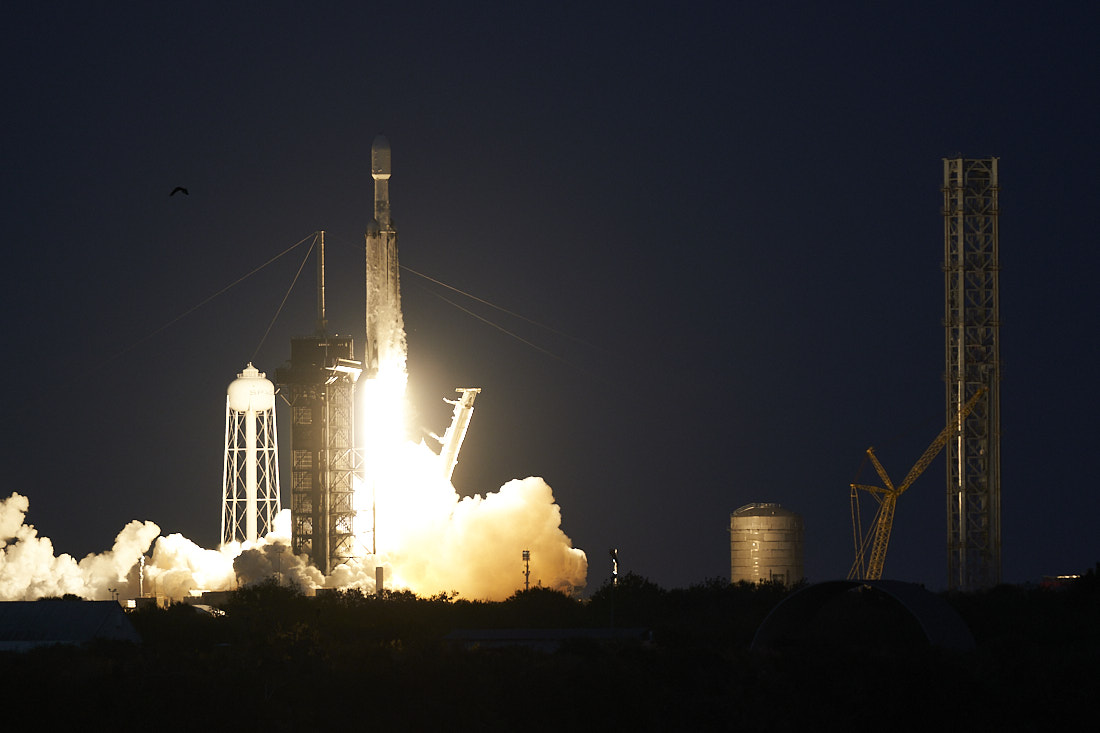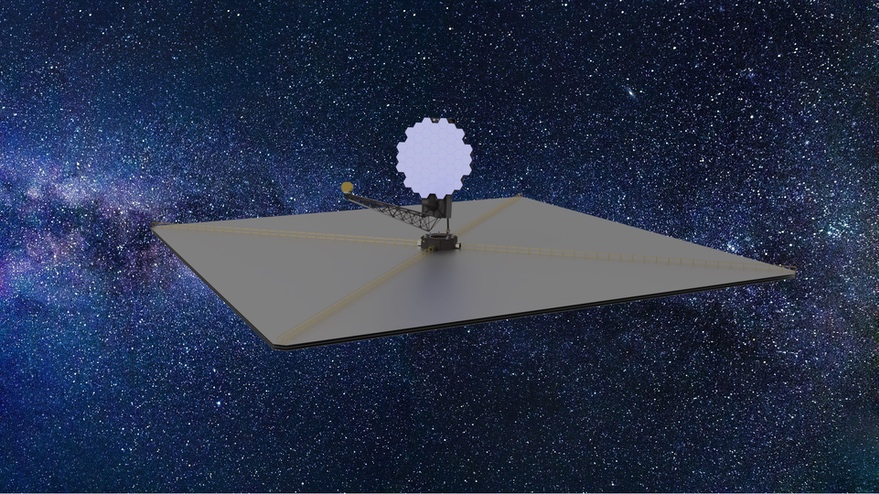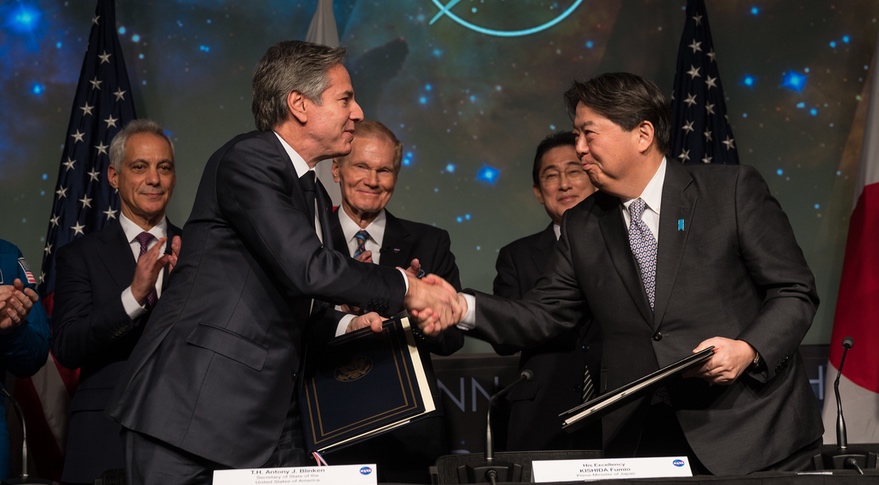SpaceX launches U.S. Space Force’s first mission of 2023 on Falcon Heavy
Original Publication Date: 2023-01-15 23:18

USSF-67 was Falcon Heavy's second national security space launch. Both side boosters landed back at SpaceX’s Landing Zones 1 and 2. The primary payload was the U.S. Space Force’s Continuous Broadcast Augmenting SATCOM (CBAS)-2.
SpaceVPX (VITA 78) and the World of Interconnect
Original Publication Date: 2023-01-16 13:00

SpaceVPX is a standard for creating plug-in cards from its slot profile and module (protocol) profiles. SpaceVPX is built upon several standards, some of which are part of the American National Standards Institute (ANSI)/VITA and European Cooperation for Space Standardization (ECSS) OpenVPX family.
Study: Space industry deploying more satellites that deliver sharper images
Original Publication Date: 2023-01-16 19:11

Report: Space industry introducing new capabilities for "very high resolution imagery" New satellites will make commercial spy satellites even more powerful, report says. These advances will benefit "demanding customers" Such as U.S. Defense and intelligence agencies. Most of the future satellites are small, and their imaging capacity will be limited.
NASA prepares next steps in development of future large space telescope
Original Publication Date: 2023-01-16 18:25

NASA is preparing to move into the next stage of planning for a future large space telescope. The agency now calls the Habitable Worlds Observatory. The 6.5-meter space telescope would search for potentially habitable exoplanets. Some scientists want NASA to move faster to get the mission launched sooner.
United States and Japan sign space cooperation framework agreement
Original Publication Date: 2023-01-16 00:37

U.S., Japan sign agreement to enable further cooperation in space exploration. Agreement covers aeronautics, space science, exploration, NASA says. U.S. Secretary of State Antony Blinken: Agreement will take cooperation to new heights. Japanese Prime Minister Fumio Kishida: Many projects, including lunar activities, are already in the works.
NASASpaceFlight.com
India launches a new ocean monitoring satellite on Saturday morning. The EOS-06 spacecraft was delivered into a low Earth orbit. The mission, PSLV C54, lifted off from the Satish Dhawan Space Centre at 11:56 local time (06:26 UTC)
Commercial Archives
SpaceX is preparing to carry out the first Starlink launch of 2023 with a mission that will place 51 satellites into orbit. The Group 2-4 mission, which was delayed from November, is now slated for liftoff at 8:18 AM PST Sunday (16:18 UTC)
International Archives
China has launched two more missions to orbit in January. First, a Chang Zheng 2C launched from the Xichang Satellite Launch Center (XSLC) on Thursday at 18:10 UTC. On Friday a Chang Zheng 2D was launched from the Jiuquan Satellite Launch Center (JSLC)
ISS Updates – Spaceflight101 – International Space Station

A veteran NASA spacewalker and an EVA rookie from Japan ended their week with nearly six hours of work outside the International Space Station. The restoration of the Station’s Mobile Servicing System started last year and continued in January to provide Canadarm2 with a new pair of grappling hands.
Featured – Spaceflight101

SpaceX Falcon 9 takes to the skies over Florida’s Cape Canaveral Monday afternoon. First of at least six cargo ships inbound to the U.S. Segment of ISS this year. Dragon spacecraft will deliver science gear, supplies and maintenance hardware to the orbiting laboratory.
News – Spaceflight101

Russia's Rockot booster set to blast off from Plesetsk Cosmodrome at 17:57 UTC with the Sentinel-3B multi-function satellite. Sentinel-3B is an upgraded version of Europe's Copernicus space observatory. It will be the third Copernicus satellite to be launched from Russia.
Re-Entry: Long March 11 Rocket Body – Spaceflight101

The CZ-11 fourth stage used leftover propellant for a partial de-orbit maneuver, lowering its perigee to 120 Kilometers. It is reportedly built around a YF-50 main engine and in a nominal mission conducts the orbital circularization after the three CZ-11 stages finish their job.
NASA’s Lunar Flashlight Team Assessing Spacecraft’s Propulsion System

Lunar Flashlight is the first interplanetary spacecraft to use a new kind of “green” propellant. The propellant, called Advanced Spacecraft Energetic Non-Toxic (ASCENT), is safer to transport and store than the commonly used propellants such as hydrazine. Other systems on Lunar Flashlight are performing well, including the never-before-flown Sphinx flight computer.
NASA Scientists and Satellites Make Sense of Earth’s Subtle Motions

Earthquakes occur at places where two sides of a fault line have become stuck together, or locked. Creeping faults are less likely to produce large earthquakes because the motion relieves much of the stress. With data collected from dozens of NASA airborne InSAR flights since 2009, scientists are mapping where the Hayward Fault is creeping.
NASA’s TESS Discovers Planetary System’s Second Earth-Size World

Scientists have identified an Earth-size world, called TOI 700 e, orbiting within the habitable zone of its star. The world is 95% Earth’s size and likely rocky. Astronomers previously discovered three planets in this system, called TOi 700 b, c, and d.
NASA Wants You to Help Study Planets Around Other Stars

Exoplanet Watch is a new program from NASA that lets anyone look for exoplanets. Participants can use their own telescopes to detect planets outside our solar system. They can also access data from other telescopes using a computer or smartphone. Exoplanet Watch began in 2018 under NASA’s Universe of Learning program.
NASA Space Missions Pinpoint Sources of CO2 Emissions on Earth

Emissions from large facilities such as power plants and refineries account for about half of global carbon dioxide emissions from fossil fuels. Bełchatów Power Station, in operation since 1988, is the largest lignite-fired power plant in the world. The Polish government has drafted plans to close the plant by the end of 2036.
Watch the Latest Water Satellite Unfold Itself in Space

The Surface Water and Ocean Topography (SWOT) satellite launched into Earth orbit on Friday, Dec. 16. The solar arrays fully deployed shortly after launch, taking about 10 minutes. The mission monitors and controls the satellite using telemetry data, but it also equipped spacecraft with four customized commercial cameras to record the action.
Construction Begins on NASA’s Next-Generation Asteroid Hunter

NASA’s Near-Earth Object Surveyor recently passed a rigorous technical and programmatic review. Now the mission is transitioning into the final design-and-fabrication phase. The mission supports the objectives of NASA’s Planetary Defense Coordination Office (PDCO)
